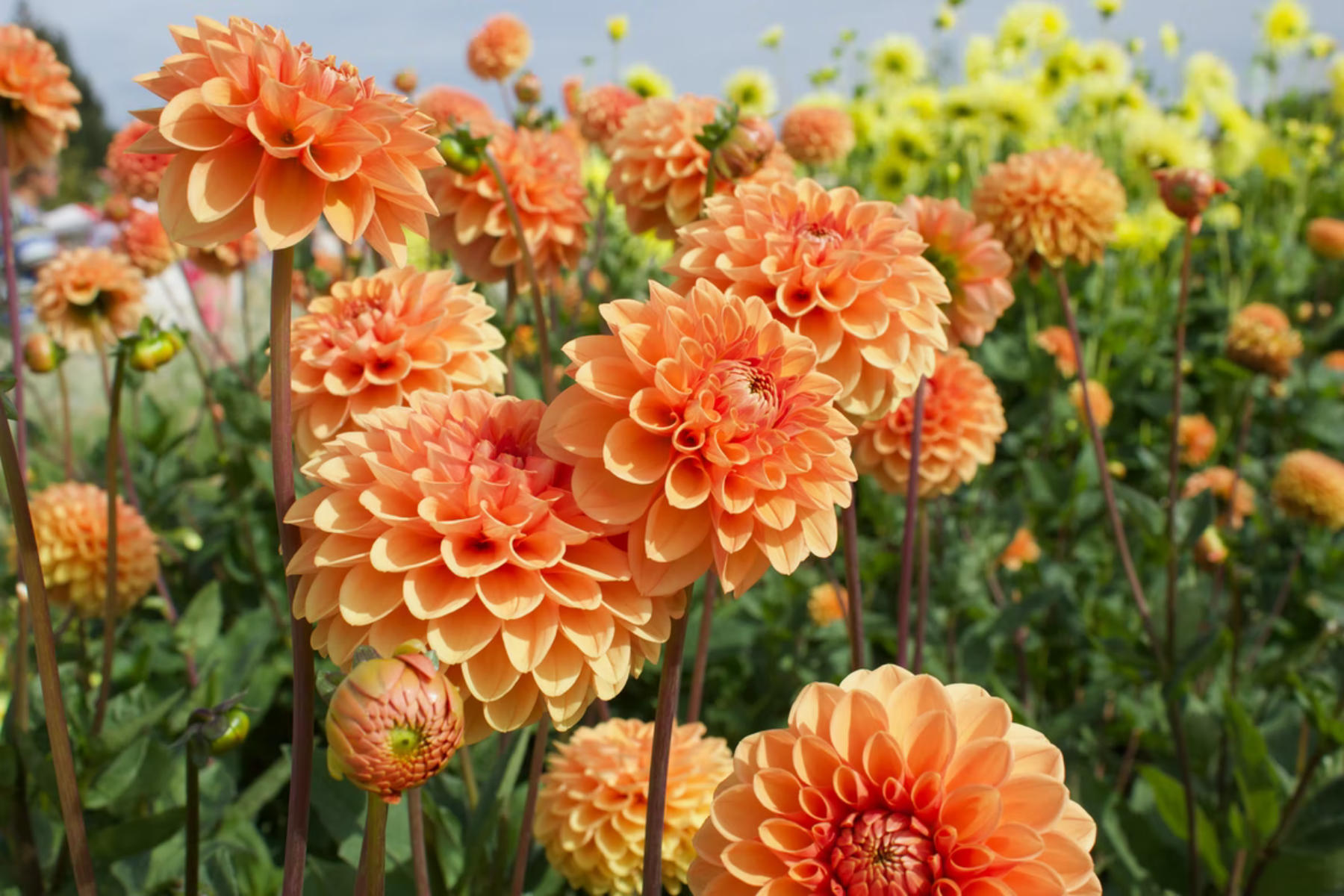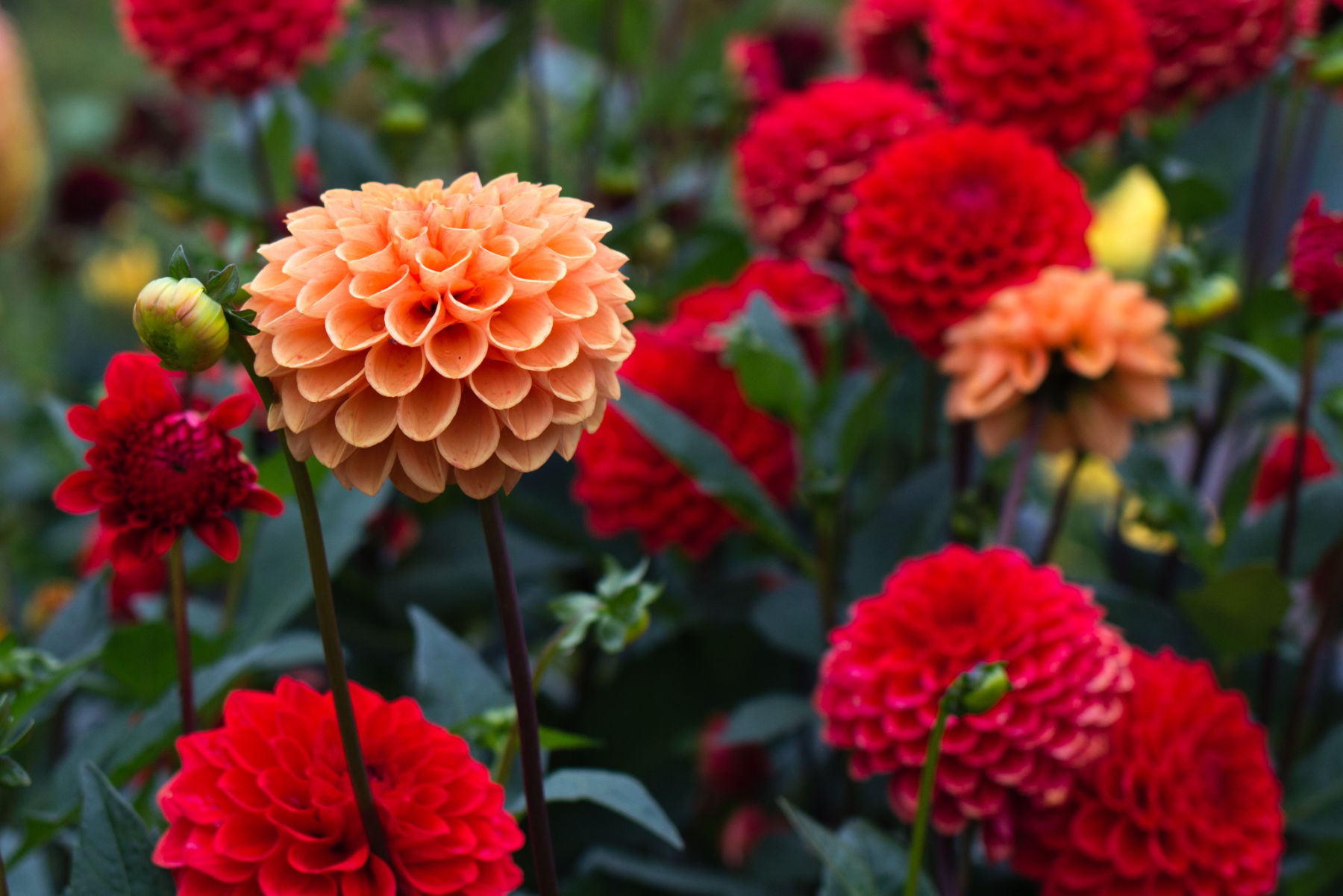Dahlias are directly related to the aster family. Such a plant is one of the most spectacular and long-blooming flowers that are grown in the garden. Dahlias have a fairly wide range of colours, and flowers can also have a wide variety of shapes. Their blooming is quite long, lasting from mid-summer until the first autumn frosts, and this is the crucial advantage of dahlias. The varieties, shapes, and colours of such plants are pretty different.
Such beautiful flowers are distinguished by their undemanding nature. If you choose a good place for planting dahlias in open ground, as well as feed and water plants correctly, then they will grow very quickly and bloom abundantly.
What to Plant Next to Dahlias in a Flower Bed?
Here are the most matching and beautiful companions for dahlias:
-
Hemerocallis;
-
Kniphofia;
-
Lythrum salicaria;
-
Cactus dahlia;
-
Calamagrostis acutiflora;
-
Panicum virgatum;
-
Pyrethrum parthenium;
-
Veronica longifoiia;
-
Crocosmia masoniorum;
-
Nepeta.
Tall dahlias fit perfectly into a flower bed of perennials, the peak blooming of which is in the summer. Regularly remove faded dahlia inflorescences, then the flower bed will retain its beauty for several weeks.
Choose Specific Plants for the Flower Bed
Select from the entire range of annuals, perennials, and bulbous flowers the most suitable options. When choosing plants, consider:
-
blooming time — at least 3-5 plants in the composition should bloom at any given time;
-
conditions — it is convenient if the plants need the same watering and the same fertilizers;
-
harmony in the design of the flower bed — select plants that are harmoniously combined in height, shades, and shapes of inflorescences (which have the same flowering time);
-
personal liking — start your flower bed with your favourite dahlias, adjust the rest of the design for them.
When compiling a flower arrangement, many factors are taken into account — the harmony of the shape and colour of plants, their combination in height. Tall dahlias can serve as backstage or soloists in a flower garden. In the first case, they are planted in the background, and they set off the beauty of the entire flower bed. In the second case, the appearance of tall soloist plants sets the tone for the entire composition because the main focus is on them.
Lower plants are added to dahlias. If tall plants acted as a backstage, then soloist flowers can be found in the middle tier. If tall plants occupy a central position in the design of the flower bed, flowers of medium height play an accompanying role.
The gaps in the flower bed are filled with plants with decorative foliage or modest ground cover flowers. Their role is to bind all parts of the composition together, to be the background. Try to design the flower bed in such a way that blooming on it lasts the whole season, as in a flower bed of continuous flowering.
Also, it is only necessary to adhere to the rule that other flowers should be less bright, preferably of one shade. The combination of bright dahlias with blue flowers, such as delphinium or sage, looks very original and unusual.







